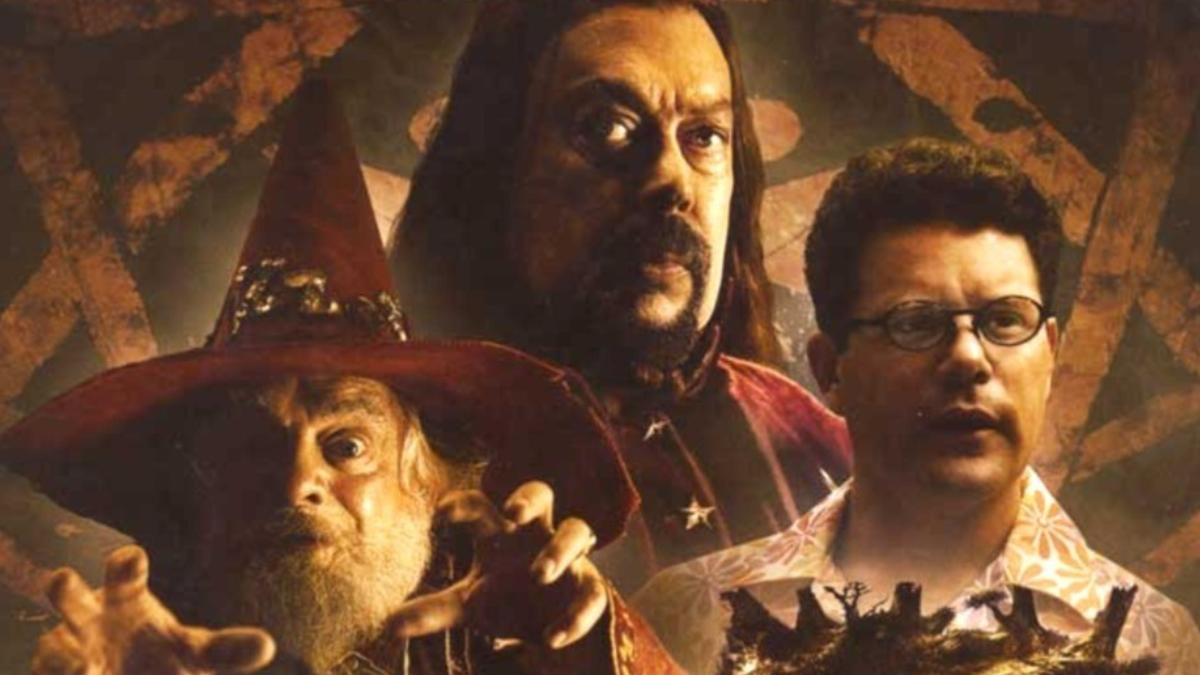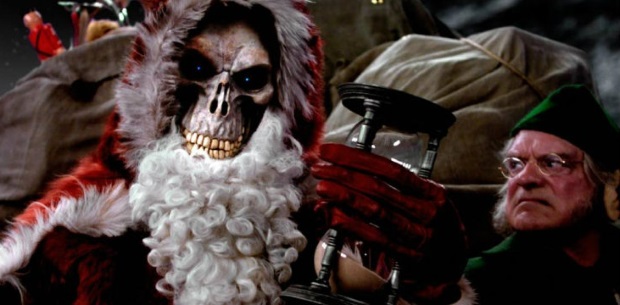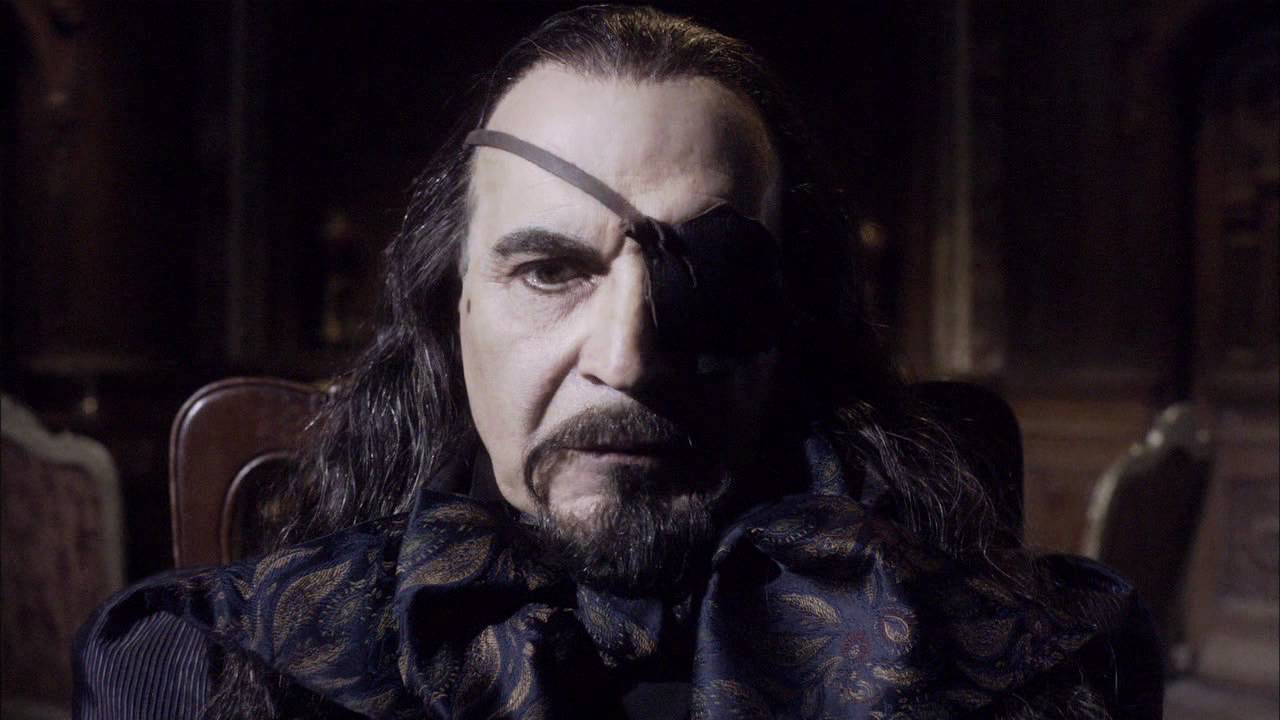Terry Pratchett’s Discworld: Revisiting the Sky Adaptations
By the third one, Sky's Discworld adaptations really started to work. With a new series in development, one fan revisits them...
This article comes from Den of Geek UK.
With the news that Terry Pratchett’s Discworld books are being developed into a CSI style TV show, it seems a slightly more topical time than usual to look back at The Mob’s three Pratchett adaptations for Sky One. So that’s what’s happening now. Never let it be said that we’re not creatures of logic.
Starting with Hogfather in 2006 as part of the festive schedules, Vadim Jean and his team followed this with The Colour Of Magic (adapting the book of the same name and its follow up The Light Fantastic) in 2008, finishing with Going Postal in 2010. Plans were afoot for adaptations of Unseen Academicals and Sourcery but these never came to fruition.
Which is a shame, as by the time of Going Postal the Mob had really got the hang of adapting Terry Pratchett books.
They had begun with the 20th Discworld novel, Hogfather, broadcast on Sky One over two episodes in December of 2006. Understandably, with a book that depicted the Discworld version of Santa, this was a big part of the Christmas line up and heavily promoted.
The first person cast was Ian Richardson as the voice of Death. Richardson passed away shortly after the broadcast, and was replaced by Christopher Lee for The Colour Of Magic (Lee had previously voiced Death for Cosgrove Hall’s animations for Soul Music and Wyrd Sisters). Richardson and Marnix van den Broeke (wearing the costume) bring Death right out of the books. Both were inspired casting.
Now, though, I’m about to get my curmudgeon on.
There’s a sense of strain and tiredness to the finished productions. They’re not unlike the Chris Columbus’ Harry Potter movies – introducing a broad and rich universe to an audience in a short and simple way.
They feel very safe.

You can understand why this might be reasonable for a Christmas broadcast, but both Hogfather and The Colour Of Magic feel like they’re focussed on whimsy at the expense of weight, character and darkness. Comedy is a key reason for Pratchett’s popularity, but it’s not the only colour he painted with.
In The Hogfather there’s a scene where several characters succumb to their greatest fears, but it’s realised in a very perfunctory way. Either no consideration was given to suspense and horror, or it was decided that wasn’t the tone they were looking for. For an 8pm broadcast slot, though, you feel like they could have gone there.
Despite visiting potentially awe-inspiring and visually splendid settings, there’s no great attempt to use this to make the most of the medium in The Hogfather. Why bother putting Discworld on telly if you’re not going to do this? Thus, we have the Tooth Fairy’s realm introduced in a fairly static wide shot, with the sheer scale of tall tower only deployed briefly later on. This same issue makes Marc Warren’s Mr Teatime less threatening than he might otherwise have been. There’s little dynamism, no build up and release.
The adaptations lack flair, which isn’t intrinsically a problem, but Hogfather also has a perfunctoriness to it. At the time there were similar criticisms of Oliver Parker’s St Trinians films, so it may just be that British crews were new to this size and scale of production. The editing and camera shots have a ‘Will this do?’ vibe to them, as if either done in a hurry or not considered important. Scenes are intercut in a way that stymies the flow and becomes distracting.
Jean addresses this, as Columbus did in his second Harry Potter film, with more confident camerawork and by engaging with the potential of the Discworld. The Wyrmberg reveal is done brilliantly, and The Colour Of Magic constantly strains against its budget in an attempt to do something visually impressive.

It’s a shame that, as books, The Colour Of Magic and The Light Fantastic aren’t as engaging as The Hogfather. The first two Discworld novels are parodies of fantasy genre conventions and novels, many of which are not suitable for family viewing even if that family has read every single Anne McCaffrey novel. They’d also stretch the budget further, so were understandably cut.
Much (well, some) has been made of David Jason’s casting as Rincewind. It’s less about the fact that he was in Hogfather (as Albert, a role he was well suited to) as many actors play different roles in both movies, but more about his suitability. Jason is a fan of the books, and was genuinely interested in the role, but was considered too old to play the middle aged wizard.
It’s true that Jason doesn’t make the Rincewind many readers envisaged, but the blame for that lies with the script more than the actor. If the lines themselves don’t reflect the character from the books there’s not a lot that can be done. You do not get a sense of Rincewind’s self-preservation, his extreme cowardice. Sean Astin’s Twoflower is another broad sketch of a character. Due to the compression of the novels into one TV episode it’s perhaps no great shock. Astin is very much cast in an attempt to calm executives who think they’re spending lots of money on fantasy and no one will watch it unless famous people are in it. Apparently there were no Asian men who fulfilled this criterion.
What The Colour Of Magic did have going for it was James Cosmo doing his ‘Stoic leader soon to be murdered’ thing, and Tim Curry playing the bad guy. Sure, he didn’t get to yell ‘SPACE’, or burst into song, but it’s still Tim Curry playing the bad guy. Casting wise, these adaptations did some good work. David Warner as Lord Downey, Charles Dance as the Patrician (pre Game Of Thrones, and whose take I favour over Jeremy Irons’), and David Suchet as Reacher Gilt were all cases of big names who fitted their roles well. Jean also cast Michelle Dockery, Laura Haddock and Claire Foy near the start of their television careers, before they went onto bigger things.

Where I think Going Postal has the edge is that it benefits from the enthusiasm and experience of the previous two adaptations, a great book to work with, and having more people come on board to tackle the script and directing job. All of a sudden, the characters seem more real, more rounded, and Suchet’s Reacher Gilt is a suitably nasty piece of work. There are tones other than ‘What larks’, some genuine pathos, and more lived-in feel to Ankh-Morpork.
Getting it right three stories in isn’t exactly unheard of in television, and if these three had been a series you could see it being renewed. However, the Mob’s adaptation of Unseen Academicals never happened, and went from being pencilled in for 2012 broadcast to never entering production.
So, here’s the thing: like any adaptation of hugely popular books, it is essentially the version in one person’s head (filtered through limitations of budget, time and several hundred other people’s headcanons) being broadcast towards a million or so other people who have their own versions in their heads.
It’s a bit of a pain really. There’s always going to be someone you upset.
I may have a list of grievances regarding the distance between Vadim Jean’s headcanon and mine, but then; Terry Pratchett seemed terribly fond of them, so what do I know?
